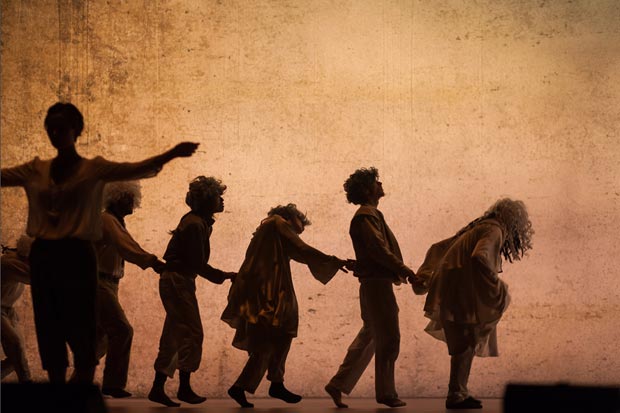
© Leah Robertson. (Click image for larger version)
Hofesh Shechter Company
Melbourne Festival: Sun
Melbourne, Arts Centre
11 October 2013
www.hofesh.co.uk
www.melbournefestival.com.au
www.artscentremelbourne.com.au
I have seen many dance works that ended exactly as they began. A starting tableau unravels and reforms, finding a tidy resolution in a familiar shape. Cue blackout, cue curtain. Applause.
Hofesh Shechter Company’s Sun may well be the first work I can remember that actually advertises presenting the end first. The reasoning for this is explained by a halting voiceover: our sneak peek is to show us where ‘things are going’, and to offer an assurance that ‘everything is going to be ok.’ This glib warning foreshadows a theatrical bait-and-switch, yet the opening ‘finale’ vignette is utterly disarming. The performers rush the stage and perform a kind of formalised court dance, extending a foot and gesturing to it amidst the tinkling notes of a baroque melody. From the wings, a second army of dancers appears, skimming and shuffling with hunched shoulders and bent elbows in a familiar Hofesh-esque traveling sequence. The ending now revealed, the dancers rewind to take it from the top.
Sun is made up of a series of vignettes, divided by frequent blackouts. The same scenes reoccur, rather like multiple movies edited together into one enormous performance timeline. The cinematic analogy is apt: at times, viewing Sun is akin to watching a broken videotape, as short sequences are repeated at an increasingly frantic pace or cut short and left unresolved until the next time they appear.
The components that make up each individual vignette are delightfully eclectic. We see the curved spines and rolling torsos as well as the small, twitchy hand gestures and deep lunges that are so specific to Shechter’s unique vocabulary. Amidst the sliding and slouching are referential gems: the flinging arms and arching spines of traditional African dancing, the swooping hips of Latin dancing, the linked hands from a conga line or Israeli folk dance, the slack limbs and waving hands of patrons at a nightclub, as well as nods to social dances of the early twentieth century (Charleston and Lindy hop) and the twerking and body rolls that seem utterly current in popular culture today. The dancers prance in unison through frenetic, repetitive jazz squares to the Irving Berlin classic Let’s face the music and dance, almost as though Fred and Ginger themselves have been trapped in a frantic, skipping loop. The eclecticism in the movement is mirrored in Shechter’s score, which forces Berlin against Rage Against the Machine and Wagner, alongside long stretches of primal, ritualistic beats.
The dancers come dressed like shabby carnies – flowing silk shirts, baggy tweed trousers, and blouses with flopping lace collars that look like relics from many different eras and stages. A conductor wears a ripped white tuxedo and occasionally shakes a tambourine, his wild, overwrought gesturing seeming to at times direct the action, although he, too, gets caught up in the driving rhythms.

© Leah Robertson. (Click image for larger version)
One of the predominant themes in Sun is the relationship between predator and prey. Life-sized wooden cutouts are driven around the stage like inflexible, storybook puppets. Facsimiles of docile, grazing sheep are pursued by a hungry wolf- he comes closer and closer in the illuminated moments between blackouts. An anonymous African tribesman becomes the prey for a colonial soldier wielding a gun; the soldier, in turn, faces down an image of a hooded youth in high-top sneakers.
The implied violence in the puppetry evolves into a movement interpretation as a woman mimes aiming a loaded shotgun at a group of skipping dancers. They are seemingly unaware of being caught in the crosshairs and any sense of imaginary threat is balanced by their joyousness. A moment later, a dancer mimes slitting a throat, while an army of dancers march with the extended limbs and suspended arms of a Nazi military display. This eclecticism creates a sense of universality within the work- suggesting, perhaps, that issues of violence and exploitation exist within every community, and at every time in history. All rise and fall beneath the glow of the same sun.
In response to all the violence, a woman in the front row stands, points and screams maniacally before sitting back down. She is, quite explicitly, the girl who ‘cries wolf’- warning the performers of the horrors just behind them. Her inclusion makes sense in the context of Sun, especially when you think of the work as a kind of contemporary Pantomime.
Shechter draws on the theatrical tradition of Panto in which the performance of story provides lessons in morality. Gestures are exaggerated, performers oscillate between addressing the audience directly or staying trapped behind the fourth wall and audience participation (in the form of the screaming woman) is a crucial part of stoking the atmosphere.
Like Punch whacking Judy, the characters in Sun are merely ‘performing’ violence for an audience: ‘performing’ racism, ‘performing’ stalking, ‘performing’ exploitation, ‘performing’ dehumanisation. In one scene, a group of men set upon an individual with plastic nightsticks. Judging by the sound of thwacking plastic against skin, this is fundamentally play. But just to demonstrate that everything really is ok, the victim and his perpetrators stand and bow before tripping offstage. No harm done, right? Shechter may be painting with broad brushstrokes here, but then again, nobody ever accused Panto of being a subtle theatrical mode.
Shechter uses a lot of repetition, both in terms of the appearance of the vignettes, and within the movement sequences themselves. Within this context, the use of repetition is not an indication of a shortage of movement ideas (indeed, the texture and intricacy within the steps is one of the most exciting parts of the work), any more than it is a simple choreographic device. In Sun, repetition seems to serve as a kind of commentary on desensitization – and particularly our desensitisation to violence. There is perhaps even a suggestion that the lines between what is ‘real’ and what is ‘play’ have blurred beyond recognition. How many times is enough to see that jazz square? At what point do we stop seeing the nuance of the movement itself, or switch off our response to the underlying meaning? When does this whole thing actually become ‘ok’?
In its last, dramatic moment, Sun shows us a lynching. A body, rope around neck, swings down from the rafters as a kind of final, last ditch attempt to shock. Suddenly, the woman screaming from the front row makes sense- despite her repeated appearances, this is actually where she fits within Sun’s shifting timeline. No more the two-dimensional representation of historical conflicts between an anonymous tribesman and colonial soldier, or between the ‘lambs to the slaughter’ and their wolf. No more the abstract ‘dancey’ interpretations of murder, torture or violence. I’ll give you something to scream about, Shechter seems to be saying: Try to make that ok.
As the lights dimmed for the final time, I was left at a kind of loss- overwhelmed by the white-hot fury within this piece as well as that final, confronting piece of imagery. Shechter is not the kind of choreographer to shy away from political themes, and he is taking aim at more than one political construct or societal injustice in Sun. The image of a lynching is deeply, racially loaded; just as the twerking, performed by women in their underwear, is deeply gendered. Shechter’s fury is palpable, but by framing this anger within a context of ‘performance’ or in terms of the multi-layered structure of a Panto, he is both shining a light on and obscuring that central emotion. The result is utterly obscene and infuriating, and yet decisive and strangely brilliant.
No doubt, Sun will go through many more revisions after it leaves Australia’s shores. The work is open enough, and diverse enough in terms of ideas and movement motifs, that it will lend itself to multiple interpretations.
But this I know: Sun is going to be one of those works that sticks with me for a long time. And I’m not really sure it’s all going to be ok after all.






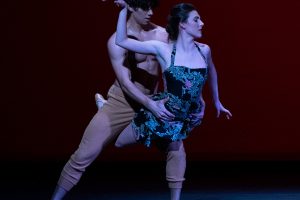

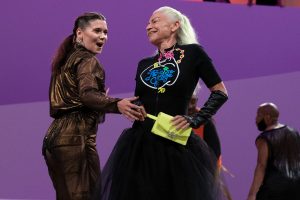


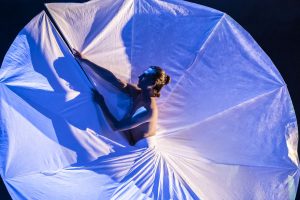

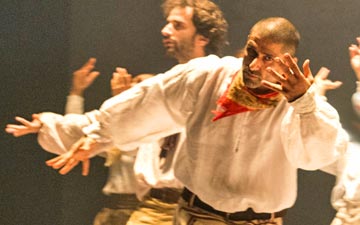
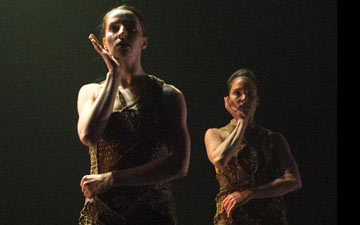
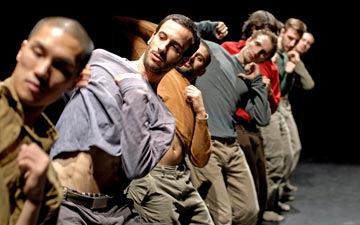

You must be logged in to post a comment.